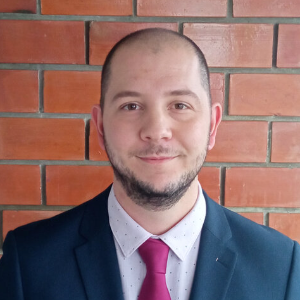Title : Self-leveling screeds with enhanced thermal properties for radiant floor systems
Abstract:
Radiant floor heating systems have become increasingly popular over the last decade and demand is forecasted to continue to grow driven by evermore stringent construction codes, increasing demand for energy-efficient building materials, and need to reduce buildings’ operating costs while providing high comfort levels to its inhabitants.
The SEERFLOOR project (Super Energy Efficient Radiant Floor Systems) covers four main research topics related to radiant floor systems design: i) development of construction materials with enhanced thermal properties, ii) geometric configuration and optimization of execution aspects, iii) experimental testing, monitoring, and validation, and iv) numerical modelling for optimal operating conditions using smart sensoring, AI algorithms, and predictive controls.
Here, a brief overview of the SEERFLOOR project will be firstly presented, followed by a detailed discussion covering the findings made on development of building materials with enhanced thermal properties gathered after the first year of the project. The development of building materials with adequate thermal properties is particularly critical as thermal and energy efficiency of radiant floor heating systems largely depend on heat transfer properties (thermal conductivity). Screed mortars used to embed piping systems in sub-base layers largely dictate energy transfer conditions and are a well-known bottleneck for increasing the technical, environmental, and economic performance of radiant floor systems.
Self-levelling screeds with improved thermal properties have been developed using highly dense metallurgical slag aggregates (ρtrue ≈ 3500 kg/m3) as natural sand surrogates. Screed mortars formulations were characterized in terms of workability, strength development, bulk density, capillarity, water absorption and thermal conductivity, and optimized to exhibit self-levelling behaviour (max. spread value ≈ 230 mm) and maximum bulk density after curing (ρmax ≈ 2400 kg/m3), while complying with existing standards for screed mortars. The experimental results gather will be now served as input data to numerically model the thermal performance of radiant floor heating systems constructed with different materials and configurations.


